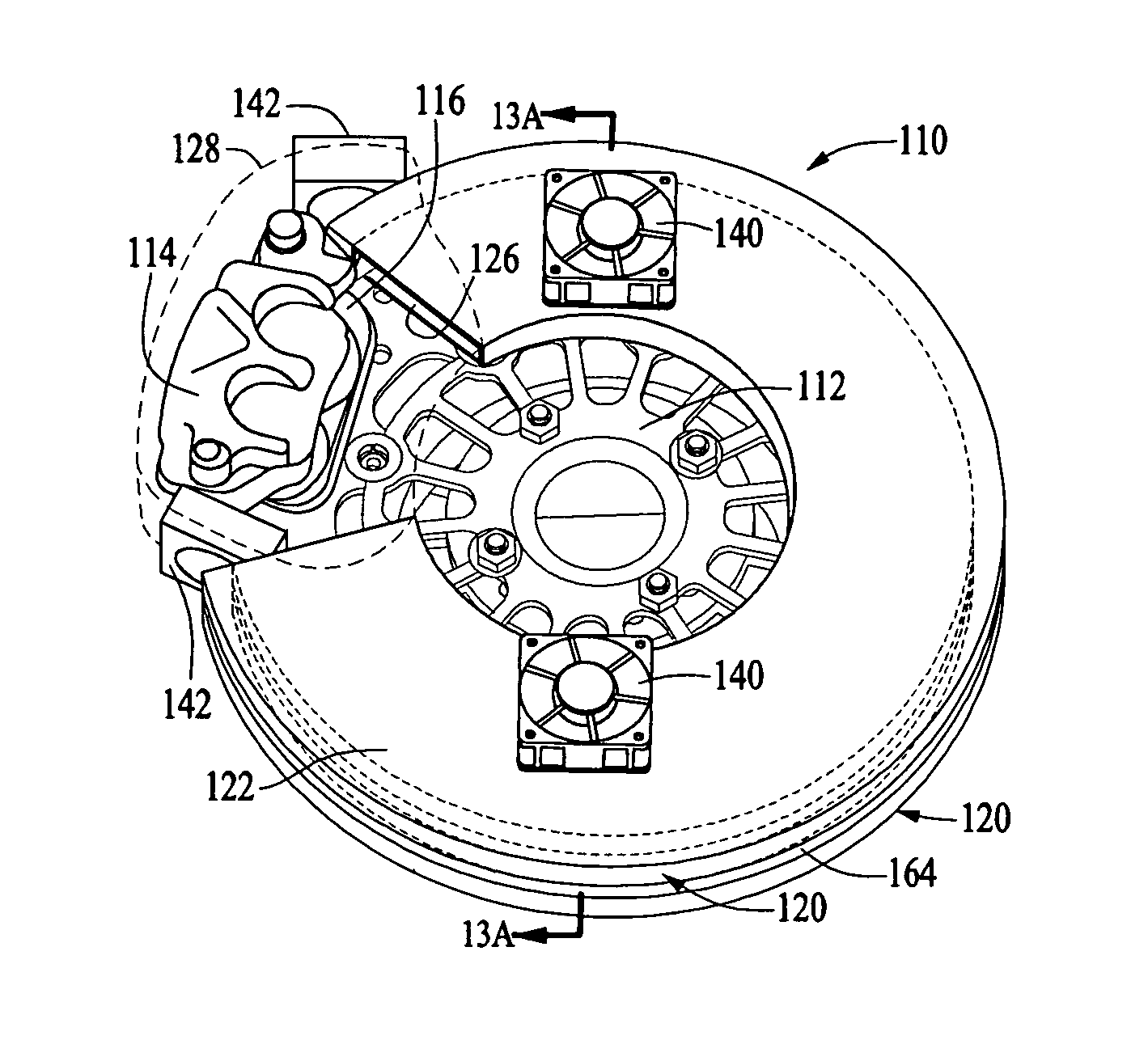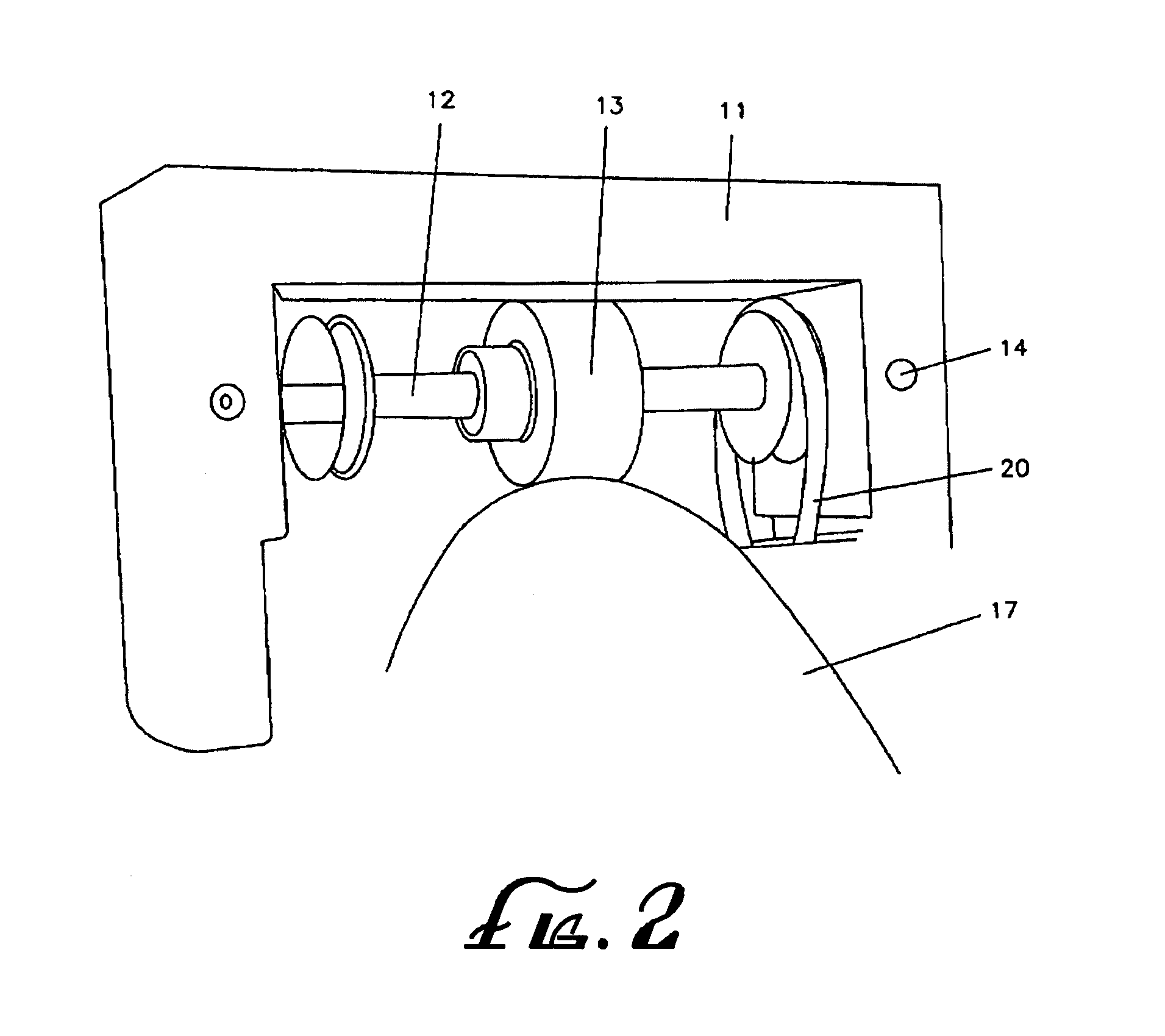Disc brake debris collection system
a technology of debris collection and disc brake, which is applied in the direction of fluid actuated brakes, slack adjusters, braking elements, etc., can solve the problems of reducing the friction coefficient needed for stopping power, releasing harmful particles into the atmosphere, and contaminating water streams
- Summary
- Abstract
- Description
- Claims
- Application Information
AI Technical Summary
Benefits of technology
Problems solved by technology
Method used
Image
Examples
Embodiment Construction
[0039]The following discussion describes in detail one embodiment of the invention and several variations of that embodiment. This discussion should not be construed, however, as limiting the invention to those particular embodiments. Practitioners skilled in the art will recognize numerous other embodiments as well.
[0040]Referring to FIGS. 1-10, in one aspect of the invention, a system is provided for increasing the air flow to a disc brake assembly 10. The system comprises a main housing 11 and a drive shaft 12. The drive shaft 12 is positioned to be powered by a rotor 17 from the disc brake assembly 10. The disc brake assembly 10 further comprises at least one impeller 15, the impeller 15 is positioned to be powered by the drive shaft 12 and is capable of being rotated to draw airflow from the rotor 17. The disc brake assembly 10 still further comprises at least one impeller housing 21. The impeller housing 21 is adapted to house the impeller 15 and can define an airflow inlet 22...
PUM
 Login to View More
Login to View More Abstract
Description
Claims
Application Information
 Login to View More
Login to View More - R&D
- Intellectual Property
- Life Sciences
- Materials
- Tech Scout
- Unparalleled Data Quality
- Higher Quality Content
- 60% Fewer Hallucinations
Browse by: Latest US Patents, China's latest patents, Technical Efficacy Thesaurus, Application Domain, Technology Topic, Popular Technical Reports.
© 2025 PatSnap. All rights reserved.Legal|Privacy policy|Modern Slavery Act Transparency Statement|Sitemap|About US| Contact US: help@patsnap.com



